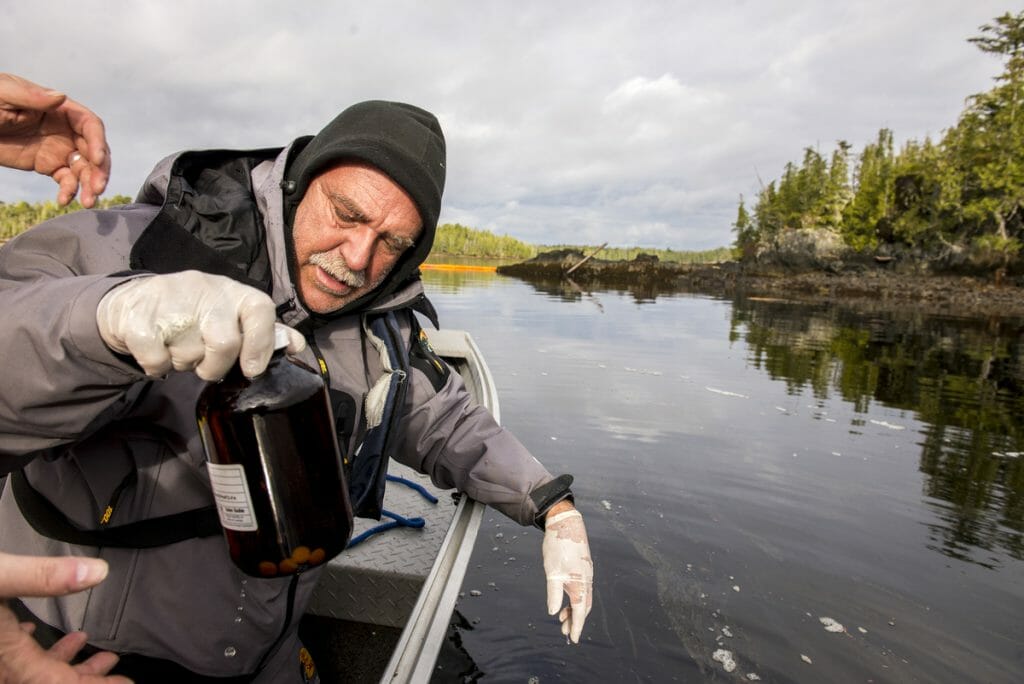Estimated Reading time

3 Mins
Heiltsuk Nation Proposes Indigenous Marine Response Centre

The Heiltsuk Nation aims to formalize its leadership role in oil spill prevention and response on BC’s central coast. In a report released mid-November, the Nation outlined its plan to establish an Indigenous Marine Response Centre (IMRC). The Centre would allow the Nation to develop its capacity to respond to marine emergencies in its territories.
The plan comes in response to the Nathen E. Stewart disaster which saw more than 100,000 litres of diesel oil spill into the marine environment of Heiltsuk Territories. The diesel caused significant injury to Heiltsuk food sources, culture, and economy and the Heiltsuk Tribal Council expressed concern over the spill’s effects on aboriginal rights and title.
We promised ourselves this would never happen in our territory again.
The spill also demonstrated the failings of existing spill response capabilities in BC’s central coast region.
“We waited for hours for a team to arrive, only to have them deploy defective equipment, in unfamiliar conditions, without safety gear or training for volunteer responders. As our community’s economy, environment, and way of life hung in the balance, we promised ourselves this would never happen in our territory again,” said Chief Councillor Marilyn Slett of Heiltsuk Tribal Council.
The proposed IMRC would help prevent disasters like the Nathan E. Stewart oil spill and strengthen response and clean-up in the case of future emergencies.
The report, conducted by experts in marine safety and engineering, describes the likelihood and distribution of various types of marine incidents on the central coast, examines best spill response practices around the world, and puts forward a plan for the IMRC that will vastly improve marine safety and safeguard the environment.
Heiltsuk have been protecting and stewarding our territory since time immemorial. This proposal is a natural evolution of that work.
The proposed Marine Response Centre will:
- be located in Heiltsuk territory where 80% of incidents in the study area occur;
- be staffed by trained crew familiar with the local marine environment;
- be equipped with vessels and equipment expressly designed for central coast conditions; and
- respond to 100% of incidents in the study area in five hours or less.
“Heiltsuk have been protecting and stewarding our territory since time immemorial,” says hereditary Chief Harvey Humchitt. “This proposal is a natural evolution of that work, and builds on the best available local knowledge and technology. We look forward to implementing this with the support of all other levels of government and our neighbours. We do this not only for Heiltsuk, but for all who travel within and through our territories.”

The report was released less than two weeks before another marine incident threatened Heiltsuk territories. On November 26 the Jake Shearer vessel broke free from its fuel barge off the coast of Bella Bella, an essential food harvesting spot for the Heiltsuk Nation. It was carrying 10,000 tons of fuel.
Again, Heiltsuk members were first responders to the boat.
“This is just one more reminder of why Indigenous first responders should be involved in marine response decision-making right from the start.” said Humchitt.
Read the full news release from Heiltsuk Nation.
Read the report: Indigenous Marine Response Centre (IMRC): Creating a World-Leading Response System.
Read more about Heiltsuk stewardship in their land and waters.
Related News Articles:
Tug in distress near Bella Bella highlights need for Indigenous-led marine response – National Observer, November 27, 2017
Heiltsuk Nation announces plan to establish Indigenous Marine Response Centre – Coast Mountain News, November 27, 2017
